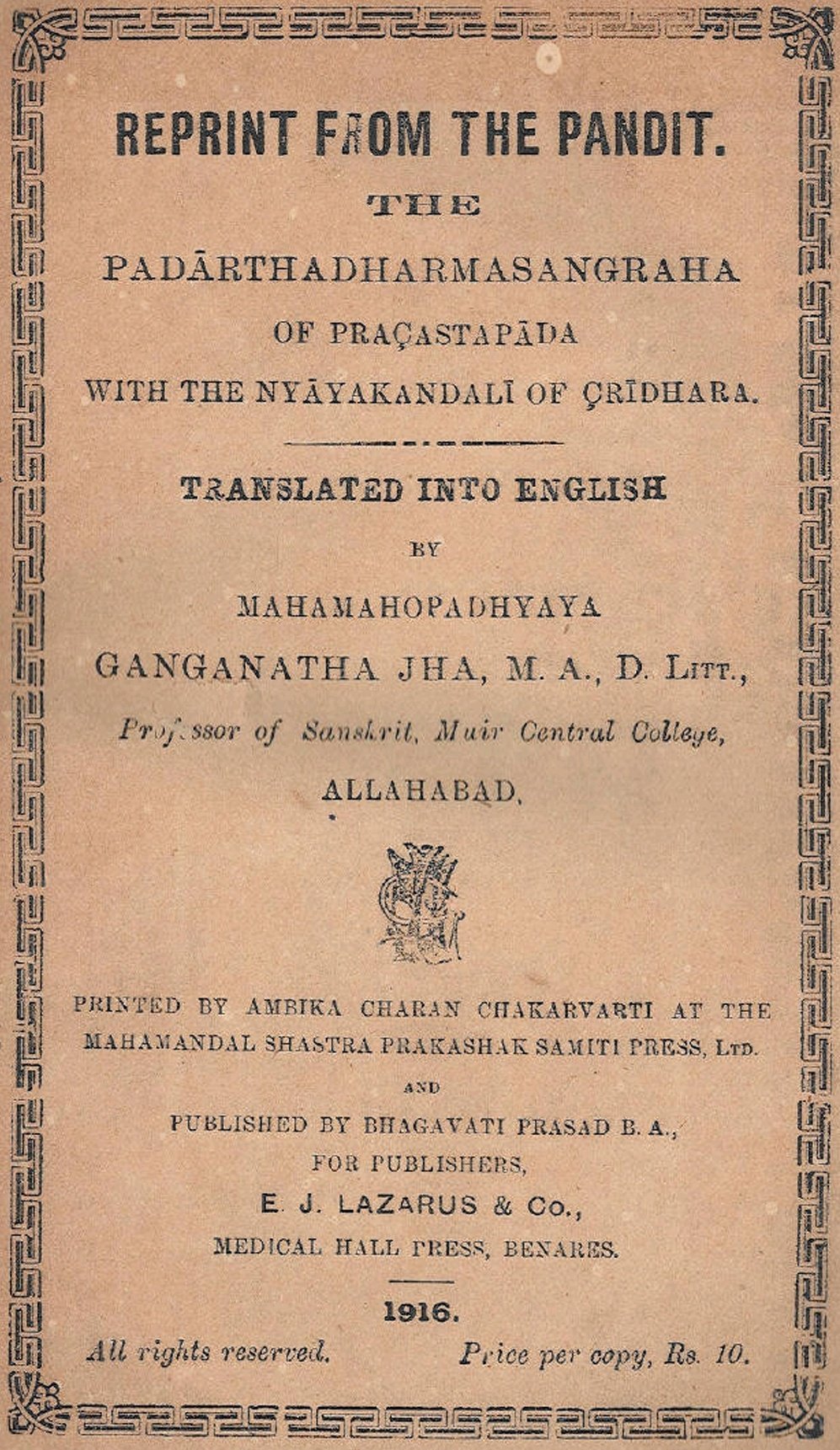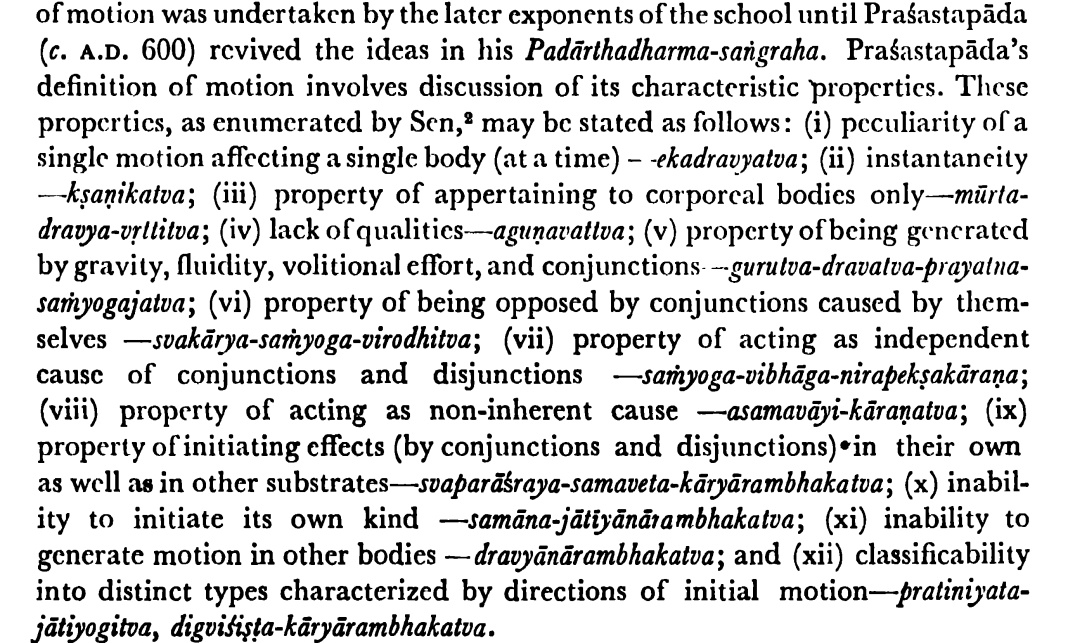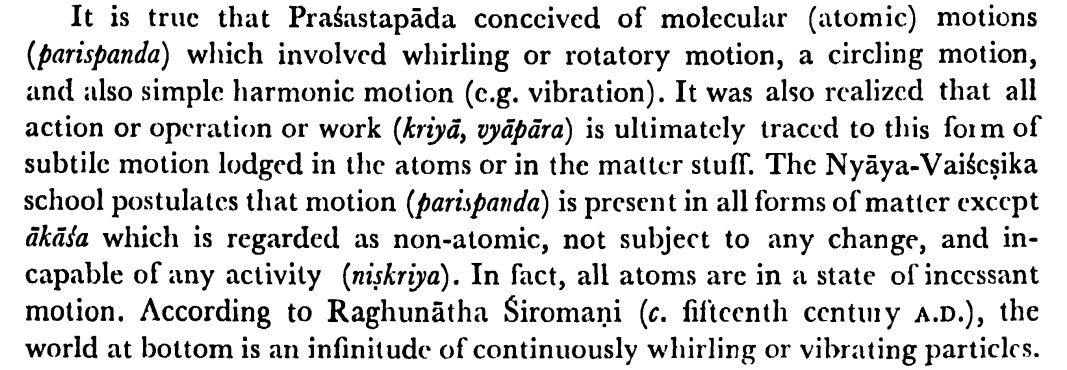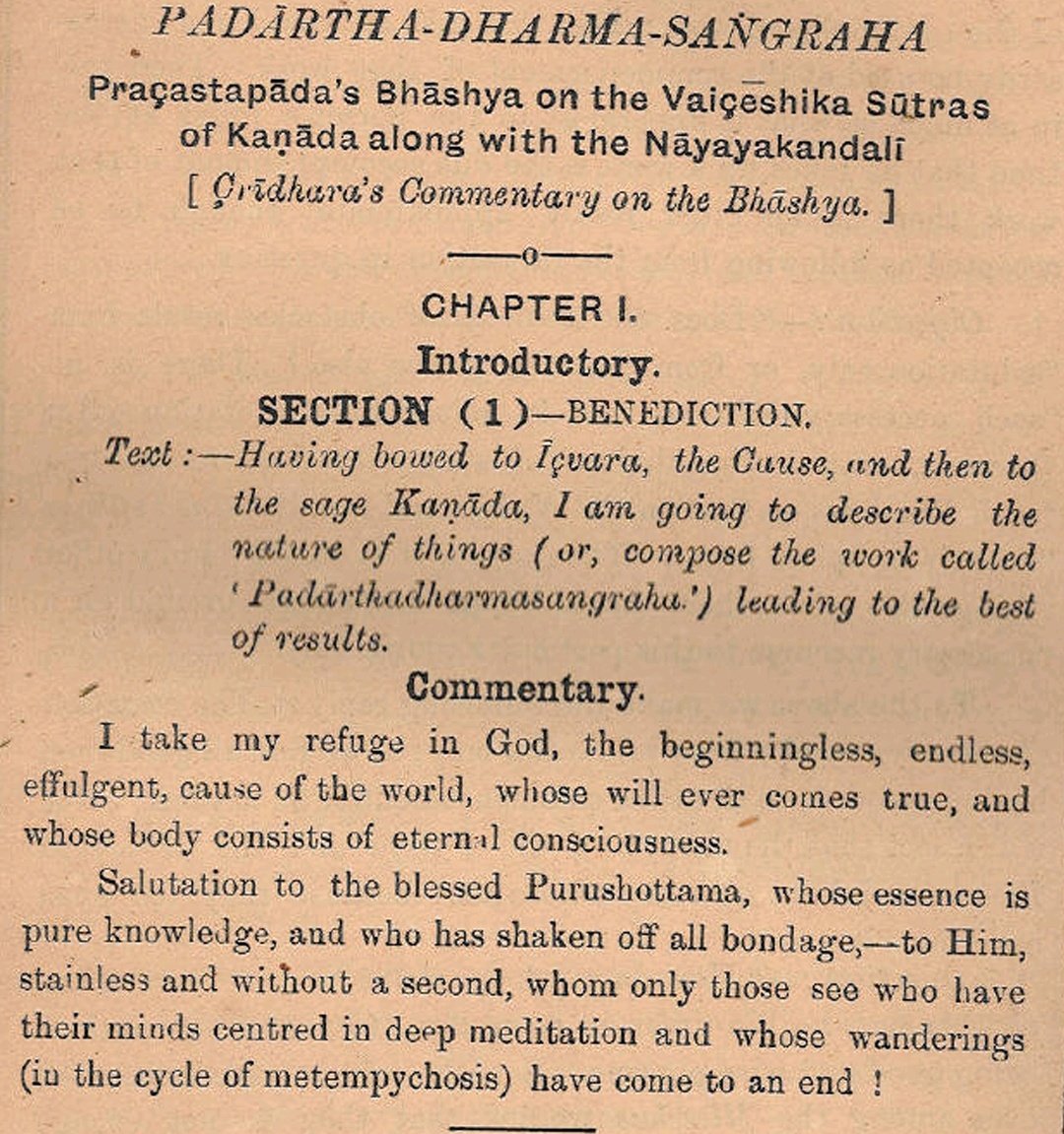The Padartha dharma sangraha of Prashastapada is one of the most important works on Physics to emerge out of ancient Bharat. The text greatly deals with the nature of matter, recognizing its atomic character & the role of atoms.
Prashastapada was an ancient Hindu philosopher who lived during the classical age of the Guptas. He wrote the Padartha dharma sangraha, which is basically a commentary on Vaisheshika Sutras of Rishi Kanada (who was the first person to propound the atomic nature of matter)
The concepts discussed in the text include those which came to be later classified as classical/newtonian mechanics. Prashastapada talks about concepts like Vega (momentum), Sanyoga vibhaga (displacement), Digvishista Karyarambhakatva (Vectors), Gamana (curvilinear motion)
Bhramana (rotary motion), Spandana (vibratory motion) among many other concepts. The concept of Vega(momentum) which forms the basis of Newton's 2nd law of motion (F=m.a) was explained by Prashastapada centuries before Newton was born.
The text talks in great detail about fluid mechanics. Concepts like Saandrataa (Viscosity), Abhisarpana (Capillary motion), fluid motion are explained in great detail here. Among the different types of motion explained by Prashastapada. This was 1000 years before Galileo & Newton.
Prasastapada also explains to us the nature of sound & its mode of propagation. He says sound travels through the medium of air in the form of circular waves.
A small extract from the Padarthadharma sangraha, where Prashastapada first pays obeisance to Ishvara & Rishi Kanada before commencing his work.
REFERENCE
The Cultural Heritage of India Volume VI by Ramakrishna Mission











